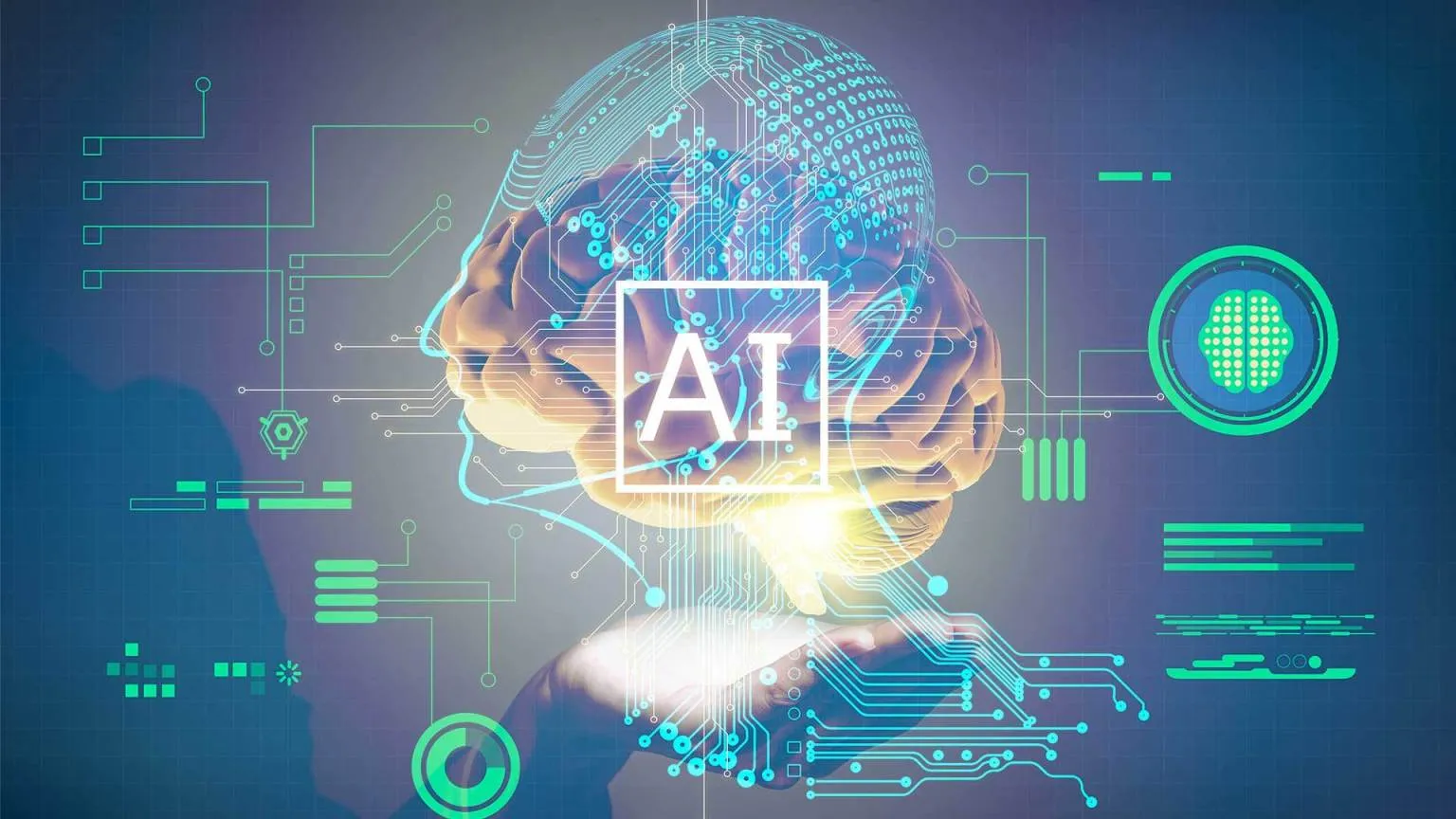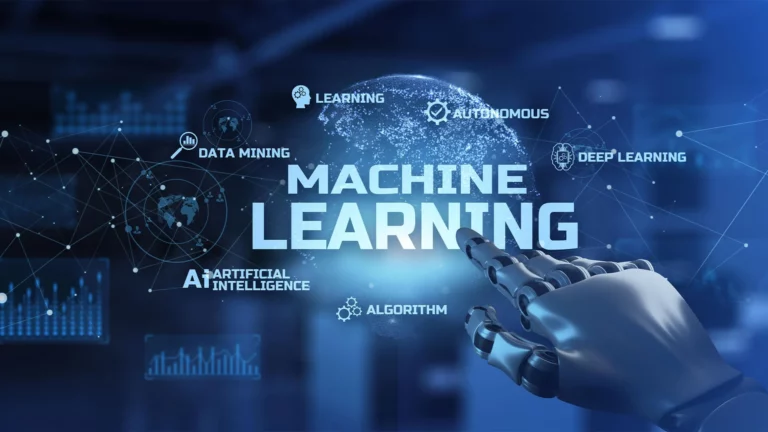Integration of Artificial Intelligence for Autonomous Data Management in Mechanical Systems
In the ever-evolving landscape of technology, the integration of artificial intelligence (AI) has become a cornerstone for optimizing various processes across industries. One significant area where AI is making a profound impact is in the autonomous data management of mechanical systems. This integration marks a paradigm shift in how organizations handle and utilize data in the realm of mechanical engineering.
Mechanical systems generate vast amounts of data, ranging from performance metrics to maintenance logs. Traditionally, managing and processing this data required extensive human intervention and often resulted in delays and inefficiencies. The integration of AI aims to address these challenges by introducing autonomous data management systems that can learn, adapt, and optimize mechanical processes in real-time.
Integration of Artificial Intelligence for Autonomous Data Management in Mechanical Systems
One key aspect of AI integration in mechanical systems is predictive maintenance. Machine learning algorithms can analyze historical data to predict when a component is likely to fail, enabling proactive maintenance rather than reactive repairs. This not only reduces downtime but also extends the lifespan of mechanical systems, leading to cost savings for organizations.
Furthermore, AI enables the creation of smart mechanical databases capable of self-optimization. These databases can automatically organize and categorize data, making it easily accessible and understandable for engineers and decision-makers. The result is a streamlined workflow where relevant information is readily available, fostering quicker and more informed decision-making.
The integration of AI also enhances the efficiency of design processes in mechanical engineering. Machine learning applications can analyze vast datasets to identify patterns and trends, aiding engineers in creating more efficient and innovative designs. This not only accelerates the product development cycle but also ensures that designs are optimized for performance and cost-effectiveness.
In summary, the integration of artificial intelligence for autonomous data management in mechanical systems represents a transformative leap in how data is utilized and managed. From predictive maintenance to smart databases and streamlined design processes, AI is reshaping the landscape of mechanical engineering, fostering efficiency, innovation, and cost-effectiveness.
Incorporating AI for Autonomous Data Management in Mechanical Databases
As the complexity of mechanical systems continues to grow, so does the volume of data generated by these systems. The efficient management of this data is crucial for maintaining optimal performance and minimizing downtime. Incorporating artificial intelligence (AI) for autonomous data management in mechanical databases is emerging as a solution to address these challenges, ushering in a new era of efficiency and reliability.
Traditional databases often struggle to cope with the sheer volume and variety of data produced by mechanical systems. AI brings a transformative approach by enabling databases to autonomously manage and organize this data. Through machine learning algorithms, these databases can adapt to changing patterns and user behaviors, ensuring that relevant information is readily available when needed.
One key application of AI in mechanical databases is anomaly detection. Machine learning models can learn the normal behavior of mechanical systems and quickly identify deviations that may indicate potential issues. This proactive approach allows for early intervention and preventive maintenance, minimizing the risk of system failures and improving overall reliability.
Moreover, AI-driven databases can enhance data security in mechanical systems. Advanced encryption algorithms and anomaly detection mechanisms can safeguard sensitive information, preventing unauthorized access and ensuring the integrity of critical data. This is particularly crucial in industries where the protection of intellectual property and sensitive designs is paramount.
The incorporation of AI also streamlines the data retrieval process. Natural language processing (NLP) capabilities enable users to interact with the database using everyday language, making it more accessible to a broader range of stakeholders. This democratization of data access empowers engineers, operators, and decision-makers to extract valuable insights without requiring specialized technical knowledge.
In conclusion, incorporating AI for autonomous data management in mechanical databases is a strategic move towards enhancing efficiency, reliability, and security. By leveraging machine learning algorithms for anomaly detection, improving data accessibility through NLP, and ensuring robust security measures, organizations can unlock the full potential of their mechanical systems, paving the way for a future where data is a driving force behind innovation and performance.
Machine Learning Applications for Autonomous Data Processing in Databases
In the realm of data processing, machine learning applications are playing a pivotal role in ushering in a new era of autonomy and efficiency. This is particularly evident in databases, where the integration of machine learning is transforming the way data is processed, analyzed, and utilized. The advent of autonomous data processing in databases is empowering organizations to extract meaningful insights and make informed decisions with unprecedented speed and accuracy.
One notable application of machine learning in autonomous data processing is query optimization. Traditional databases often rely on predetermined algorithms for query execution, which may not always yield the most efficient results. Machine learning algorithms, on the other hand, can learn from historical query performance and dynamically optimize execution plans. This results in faster response times and more efficient resource utilization.
Another significant area is the automation of data cleansing and normalization. Machine learning models can analyze large datasets to identify and rectify inconsistencies, missing values, and outliers. This autonomous data cleaning process ensures that databases maintain a high level of accuracy, providing reliable information for decision-making and analysis.
Machine learning is also instrumental in enhancing predictive analytics within databases. By analyzing historical data patterns, machine learning algorithms can generate accurate predictions about future trends, allowing organizations to proactively address potential challenges and capitalize on emerging opportunities. This proactive approach is particularly valuable in industries where timely decision-making is critical.
Furthermore, the integration of machine learning in databases facilitates the implementation of intelligent data categorization and indexing. These algorithms can automatically classify and organize data based on its content, making it easier for users to retrieve relevant information. This not only saves time but also ensures that databases remain organized and user-friendly even as the volume of data continues to grow.
In summary, machine learning applications for autonomous data processing in databases represent a leap forward in the efficiency and effectiveness of data utilization. From optimizing query execution to automating data cleansing and enabling predictive analytics, machine learning is reshaping the landscape of data processing, unlocking new possibilities for organizations across various industries.
AI-Driven Data Analytics for Predictive Maintenance in Mechanical Systems
Artificial Intelligence (AI) is revolutionizing the realm of predictive maintenance in mechanical systems through advanced data analytics. Traditionally, maintenance strategies were reactive, leading to downtime, increased costs, and decreased efficiency. The integration of AI-driven data analytics is a game-changer, enabling organizations to shift from reactive to predictive maintenance, thereby enhancing the reliability and performance of mechanical systems.
One of the key advantages of AI-driven data analytics in predictive maintenance is the ability to analyze vast amounts of historical data. Machine learning algorithms can discern patterns and correlations within this data, identifying precursors to mechanical failures. This proactive approach allows organizations to predict when a component is likely to fail, enabling scheduled maintenance before a critical issue arises. As a result, downtime is minimized, and the overall lifespan of mechanical systems is extended.
Furthermore, AI enables real-time monitoring of mechanical components, creating a dynamic feedback loop for continuous improvement. Sensors and IoT devices collect data on various parameters, and AI algorithms analyze this data in real-time. If anomalies or deviations are detected, the system can trigger alerts or even autonomous actions to prevent failures. This level of responsiveness is invaluable in industries where the cost of downtime is high, such as manufacturing or transportation.
The application of AI-driven data analytics for predictive maintenance goes beyond identifying potential failures. It also optimizes maintenance schedules based on the actual condition of components. Instead of adhering to rigid time-based maintenance intervals, organizations can implement condition-based maintenance, reducing unnecessary maintenance activities and associated costs.
Moreover, AI-driven predictive maintenance contributes to cost savings by minimizing the need for emergency repairs and reducing the inventory of spare parts. With accurate predictions of when components will require maintenance or replacement, organizations can strategically plan and allocate resources, ensuring that maintenance activities are both cost-effective and efficient.
In conclusion, AI-driven data analytics for predictive maintenance in mechanical systems is a transformative approach that significantly enhances the reliability, efficiency, and cost-effectiveness of maintenance strategies. By leveraging machine learning algorithms to analyze historical data, enable real-time monitoring, and optimize maintenance schedules, organizations can transition from reactive to predictive maintenance, unlocking a new era of reliability in mechanical systems.
Autonomous Decision-Making Through AI in Mechanical Databases
The integration of artificial intelligence (AI) into mechanical databases is paving the way for autonomous decision-making, revolutionizing how organizations manage and utilize data. In mechanical systems, where efficiency and precision are paramount, AI-driven autonomous decision-making in databases brings unprecedented advantages, streamlining operations, enhancing reliability, and optimizing resource allocation.
One of the key aspects of autonomous decision-making through AI in mechanical databases is the ability to process and analyze data in real-time. Traditional databases often struggle to handle the influx of data from sensors and IoT devices in a dynamic mechanical environment. AI algorithms, however, can process vast amounts of data instantly, providing actionable insights that empower autonomous decision-making.
Machine learning models can adapt and learn from historical data, enabling them to make informed decisions based on patterns and trends. In the context of mechanical databases, this means that the system can autonomously optimize performance, anticipate potential issues, and even make decisions on component replacements or maintenance schedules without human intervention. This level of autonomy not only reduces the burden on human operators but also enhances the overall efficiency of mechanical systems.
Autonomous decision-making through AI also plays a crucial role in improving fault tolerance and resilience in mechanical databases. The system can autonomously detect anomalies, mitigate potential risks, and make decisions to ensure the continuous operation of critical components. This is particularly significant in industries where system failures can have severe consequences, such as aerospace or energy production.
Another advantage is the ability of AI to enable personalized decision-making based on user preferences and requirements. Natural language processing (NLP) capabilities allow users to interact with the database in a more intuitive manner, providing a user-friendly experience. This democratization of decision-making ensures that relevant stakeholders, from engineers to decision-makers, can access and utilize the database effectively.
The integration of AI for autonomous decision-making in mechanical databases is reshaping the landscape of data utilization and management. By processing data in real-time, learning from historical patterns, enhancing fault tolerance, and providing personalized decision-making, AI is driving a paradigm shift towards more efficient, reliable, and user-friendly mechanical systems.
Strategies for Implementing and Optimizing AI Integration in Mechanical Data Management
Implementing and optimizing artificial intelligence (AI) integration in mechanical data management is a multifaceted process that requires careful planning, strategic execution, and continuous refinement. As organizations seek to harness the power of AI for improved efficiency and innovation in mechanical systems, several key strategies can guide the successful integration and optimization of AI in data management.
- Define Clear Objectives: Before embarking on AI integration, organizations must define clear objectives. Whether the goal is to enhance predictive maintenance, optimize design processes, or streamline data retrieval, having well-defined objectives provides a roadmap for the integration process.
- Data Quality and Accessibility: AI relies heavily on high-quality data. Ensuring that data is accurate, complete, and accessible is crucial. Organizations should invest in data cleansing, normalization, and storage infrastructure to support AI-driven applications effectively.
- Select Appropriate AI Models: The choice of AI models depends on the specific requirements of the mechanical system. Whether it’s predictive maintenance, design optimization, or data categorization, selecting the right AI models, such as machine learning algorithms or deep learning networks, is essential for success.
- Integration with Existing Systems: Seamless integration with existing mechanical systems and databases is critical. This involves compatibility assessments, data migration strategies, and the development of APIs (Application Programming Interfaces) to facilitate communication between AI-driven applications and legacy systems.
- User Training and Adoption: User acceptance and understanding are integral to the success of AI integration. Providing training programs for users and stakeholders ensures that they can effectively interact with AI-driven interfaces, understand the insights generated, and make informed decisions.
- Continuous Monitoring and Improvement: AI models are not static; they evolve over time. Establishing a robust monitoring system allows organizations to track the performance of AI applications, identify areas for improvement, and implement updates to enhance accuracy and efficiency continually.
- Data Security and Compliance: With the integration of AI comes the responsibility to address data security and compliance. Implementing encryption, access controls, and compliance measures ensures that sensitive data is protected, and regulatory requirements are met.
- Scalability and Flexibility: Mechanical systems and data volumes can evolve. Designing AI integration strategies that are scalable and flexible allows organizations to adapt to changing requirements and seamlessly incorporate new technologies or expand existing systems.
- Collaboration and Communication: Foster collaboration between data scientists, engineers, and decision-makers. Clear communication channels ensure that insights generated by AI are effectively translated into actionable decisions and improvements in mechanical systems.
- Performance Metrics and Evaluation: Establishing performance metrics and regularly evaluating the impact of AI integration is crucial. Metrics may include improved system reliability, reduced downtime, increased efficiency, or cost savings. Continuous evaluation enables organizations to quantify the benefits of AI and identify areas for further enhancement.
Successful AI integration in mechanical data management requires a holistic approach that encompasses clear objectives, data quality, model selection, seamless integration, user adoption, continuous improvement, security, scalability, collaboration, and performance evaluation. By adopting these strategies, organizations can unlock the full potential of AI in optimizing mechanical systems and revolutionize data-driven decision-making processes.










